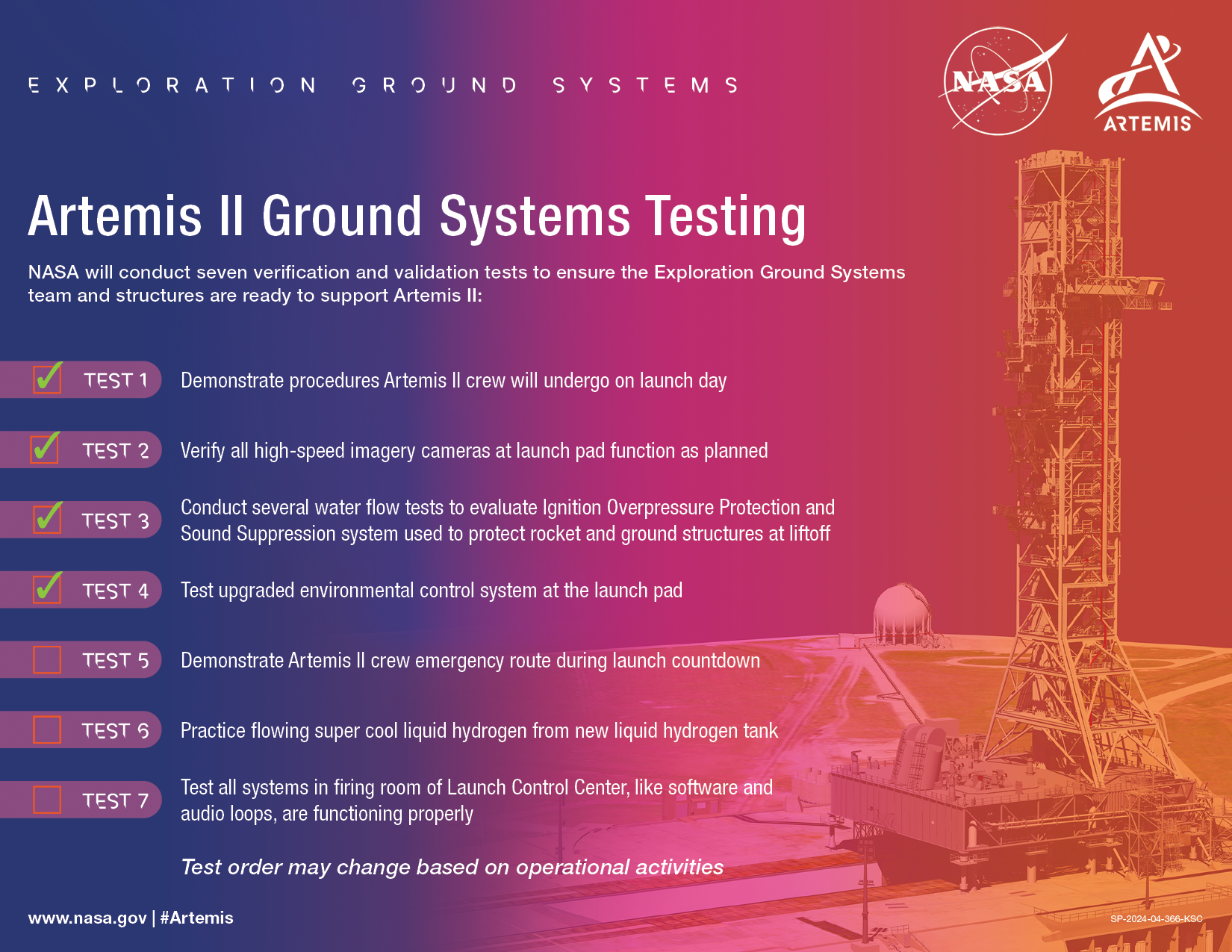
Teams with NASA’s Exploration Ground Systems Program successfully completed tests of the ignition overpressure protection and sound suppression and launch cooling systems at Launch Pad 39B at the agency’s Kennedy Space Center in Florida. These systems will protect the mobile launcher umbilicals and other crucial ground systems during liftoff of the Artemis II mission.
When SLS’s (Space Launch System) solid rocket boosters ignite, the RS-25 engines start up, and the rocket comes to life, there will be a thundering amount of noise, heat, and energy produced at liftoff. To ensure the crew, SLS, the Orion spacecraft and the surrounding ground infrastructure are protected during launch, teams practiced releasing approximately 400,000 gallons of water from large overhead holding tanks onto the mobile launcher and the pad’s flame deflector. The water will provide protection from the extreme heat generated by SLS’s exhaust and help suppress the sound produced at liftoff.
Recent upgrades to the mobile launcher were designed to enhance the performance of these systems and assure better launch imagery. Some of the upgrades include:
- New water balancing plates on the mobile launcher and pad piping to allow higher water flow rates
- Redesigned rainbird water nozzles to allow increased water flow rates and improved mobile launcher deck water coverage
- New hydrogen burn-off ignitor and camera water barriers for protection from the increased mobile launcher deck water flow
- Raised camera housings and additional splash shields around the lenses to maximize amount of video obtained during launch
- Adding additional levels on the mobile launcher to protect the emergency egress baskets and pilot line hoist motors
The water flows were conducted as part of a series of integrated ground systems tests intended to confirm that various systems on the mobile launcher and at Launch Pad 39B work as intended, both individually and with each other.
The Artemis II mission builds on the success of the uncrewed Artemis I mission and will demonstrate a broad range of capabilities needed for missions to the Moon and beyond. The Artemis II test flight will be NASA’s first mission with crew aboard the SLS rocket and Orion spacecraft and confirm the spacecraft systems operate as designed with crew aboard in the environment of deep space.

